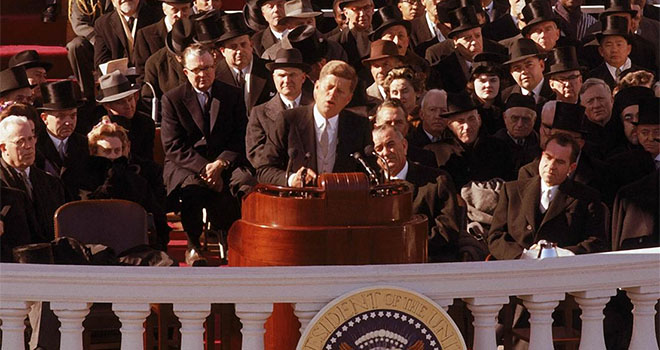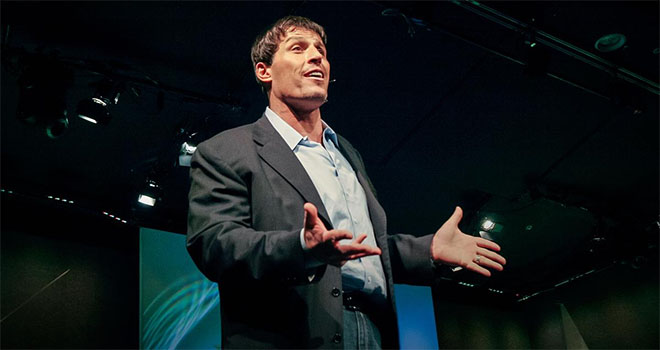The speed at which you talk has a huge influence on how the audience perceives you and your speech. It’s important, therefore, to understand your speaking rate and how to alter it depending on the type of speech you are delivering.
In this article, you’ll learn how to calculate your speaking rate and how it compares to the average rate for popular talks to give you some context. Audio samples of speaking rates at the extremes are provided, so you can understand the difference in words per minute.
At the end of the article, exercises are provided to help you develop an adaptive speaking rate.
How to calculate your speaking rate
Speaking rate is often expressed in words per minute (wpm). To calculate this value, you’ll need to record yourself talking for a few minutes and then add up the number of words in your speech. Divide the total number of words by the number of minutes your speech took.
Speaking rate (wpm) = total words / number of minutes
You can record yourself with this online voice recorder. Once you have the audio of your speech, there are two ways to get the number of words:
- Manually count the words as you listen back to the audio
- Upload the speech recording to a speech-to-text platform
When you have the speech converted to text format, copy the text into a software package such as Microsoft Word, which provides a useful word count for the document.
Once you have the number of words, convert the time to minutes – for example, if your speech was 4 minutes 30 seconds, you need to divide the number of words by 4.5 (as 30 seconds is half of a minute).

John F. Kennedy’s Inaugural Address, where he slowed his usually very high speaking rate down to below 100 wpm (his average was well above 150 wpm).
What is the average speaking rate?
The average speaking rate changes dramatically for the purpose of your speech. According to the National Center for Voice and Speech, the average conversation rate for English speakers in the United States is about 150 wpm. However, for radio presenters or podcasters, the wpm is higher.
Here is a list of average speech rates for different activities.
Average speech rates
- Presentations: between 100-150 wpm for a comfortable pace
- Conversational: between 120-150 wpm
- Audiobooks: between 150-160 wpm, which is the upper range that people comfortably hear and vocalize words
- Radio hosts and podcasters: between 150-160 wpm
- Auctioneers: can speak at about 250 wpm
- Commentators: between 250-400 wpm
To give these speech rates some context, if the speaking pace is 130 words per minute, you’ll finish reading an A4 page (Calibri, font size 11) in 4 minutes, 51 seconds.

Extremes of speaking rate – world record pace
Steven Woodmore is a British electronics salesman and comedian known for his rapid speech articulation, being able to articulate 637 wpm, a speed four times faster than the average person.
Woodmore was listed by the Guinness Book of World Records as the world’s fastest talker, a title which he held for five years, taking the helm from the previous record holder, John Moschitta, Jr.
A comparison of words per minute for popular TED Talks
Let’s compare different presentation styles to show you how speech rates can vary widely. We’ll use popular TED Talks to compare words per minute for different presentations.
We’ve analyzed five TED Talks, ranging from short speeches up to 22 minutes. When we were calculating the length of the presentation, we included time when the audience was clapping and when the presenter changed slides.
We tried to pick from a wide range of speech topics to get an unbiased average.
The average speaking rate was 173 words per minute.
The speaking rate ranged from 154 to 201 words per minute.
Popular TED Talk speaking rates
- How great leaders inspire action (Simon Sinek) – 170 wpm
- The power of introverts (Susan Cain) – 176 wpm
- Do schools kill creativity? (Sir Ken Robinson) – 165 wpm
- Why we do what we do (Tony Robbins) – 201 wpm
- The power of vulnerability (Brené Brown) – 154 wpm

What influences your overall speaking rate?
Here are several factors that affect the overall speaking rate, most of which can be controlled by you.
- Regular speaking rate – this is the result of your environment, where you grew up, your parents, culture, friends around you, and more.
- Nervousness – you’ve probably noticed it yourself, when you are nervous, you speak much quicker and take short shallow breaths as you rush through the content.
- Saying something urgent – understandably, we speak much quicker when there is an emergency, for example calling an ambulance or explaining an incident to the police.
- Mental fatigue – tiredness affects our thought process, making it harder for us to articulate ourselves, causing us to talk more slowly.
- Complexity of the words – longer, more complex words will take slightly longer to say, and if you are counting words per minute, it will affect speech pace slightly (although somewhat negligible)
- Complexity of content – if you are presenting complex content, you’ll want to speak slower than usual to give the audience time to comprehend the concepts and content.
- Verbal pauses – pauses are a great way to break up the content and give emphasis to what you are saying. Naturally this will slow down your speaking rate. Read 10 Effective Ways to use Pauses in your Speech.
- Event driven pauses – these are pauses caused by a change in slides, a demo of your product, checking your notes, and so on.
- Audience driven pauses – these events are caused by your audience, for example, when they laugh and ask questions.
Example audio clips of different speech rates
Example 1 – Why we do what we do (Tony Robbins)
Sample of ‘Why we do what we do’ speech, spoken at 201 wpm.
Example 2 – We Shall Fight on the Beaches (Winston Churchill)
Sample of ‘We Shall Fight on the Beaches’ speech, spoken at 128 wpm.

Tony Robbins giving his TED Talk, Why we do what we do, with an average speaking pace of 201 wpm.
Is speaking rate important?
In short, yes, your rate of speech does have an impact on how the audience perceive you and your message.
Generally, a slower rate is easier to understand for the audience. If you include pauses as well, you give the audience time to absorb the messages of your presentation.
However listening back to the Tony Robbins speech above, which was at over 200 wpm, you’ll probably find you were still able to understand what he was saying. This is because he clearly articulates his words and uses easy to understand language. Clarity is just as important as speech pace.

Try to vary your speaking rate
No matter what your average speaking rate is over the entire speech, you should vary it throughout the speech. Varying your speech makes it more interesting for the audience and adds emotion to the content. Without pace variation, you’re in danger of sounding monotone.
For example, you can speak faster to convey excitement, or slower to reflect sadness or importance.
When to change your speed
- Speaking fast – indication of passion, urgency, excitement, and emotion
- Speaking slow – indication of importance, sadness, confusion, the seriousness of a point
When you’re speaking quickly, initially it is exciting for the audience, but after a minute or two, it stops being stimulating and becomes overwhelming.
When you are speaking slowly, it can grab the attention of the audience and help them process every word, but an entire talk at a slow pace will bore your audience: while waiting for you to get to the point they will lose interest.
Remember: The rate we speak at is highly individual
This is an important point to remember. If you take some well-known speeches and change the pace of their delivery, the meaning would be lost. For example, the “I Have a Dream” by Martin Luther King was spoken at a slow rate.
The long pauses and carefully spoken words give us time to absorb the information and plenty of time for the audience to applaud throughout. Even if you did not understand the words, the slow pace indicates that the message is important and should be taken seriously.
Cultural differences
Culture plays a big role in the pace we naturally speak at. Even locations within the same country can make a difference – people in London typically speak faster than people from Yorkshire for example. Also, if English isn’t the speakers first language, they usually speak a little slower as well.
How to practice: Getting the right speaking pace
Test your Speaking Pace
Practice reading a transcript aloud at different paces to better understand how different speeds sound. Learn More
Here are two ways to measure and practice your speaking pace.
Use a metronome
The metronome ticks at a certain rate depending on what you set it to. If you want to speak at 130 words per minute, set the metronome to this value and practice saying a word every tick of the metronome.
This is a good start, however when actually presenting to an audience, you’ll want to vary this pace to emphasise certain points – a speech at exactly 130 wpm throughout would sound very monotone and rehearsed.
Use practice exercises
Online exercises let you practice your speech in a variety of scenarios. Practice presenting at a conference, delivering a sales pitch, answering interview questions, and more. With VirtualSpeech practice exercises, you can get feedback on your speaking rate after your speech and adjust it accordingly for your next speech.
Example practice exercises you can use to measure your speaking pace during a speech or presentation. See all the practice exercises here.
5 exercises to develop an adaptive speaking rate
Tips taken from Quick & easy tips for speaking rate
1. Reading children’s stories
Read a children’s story silently several times to familiarize yourself with the flow. Go through it again, noting which passages would suit taking more quickly and which should be slower. Then read it aloud and listen carefully to how speed alters interpretation. Repeat the exercise altering your speed over particular passages, noting the differences.
Record yourself if possible doing this and all the following exercises. Save all the versions you do. You’ll then have them to refer back to. Recording takes out the guess work as you can hear exactly what you did, rather than what you imagined you did. It doesn’t lie!
2. Read factual reports
Pick an information loaded report from a newspaper or magazine.
Go through it silently to familiarize yourself with the flow of material and then read it aloud. Make a note of which passages need careful or slow reading and which can be taken at a faster rate. Re-read aloud until you feel you have the mix of speeds right.
As an extension exercise, read the report as if you were reading for an audience who knew nothing about the subject. Note what changes you made and why.
3. Experiment with one of your own speeches
Record and time yourself delivering a speech of your own at your current ‘normal’ speaking rate.
Note the time down. Now go through again having marked passages for slower or faster treatment. Note the new time and your new insights.
4. Listen to good speakers
Listen to speakers you admire. They could be radio presenters, commencement speeches, anybody accustomed to speaking in public. Note the different rates of speech they use over the course of their presentation and the effectiveness and experiment with them for yourself.
5. Play with material you are familiar with
Read or recite part of a text you know well quickly (or slowly). If you can record yourself, do so. If not, listen and note the effect it has on you. If you’ve recorded yourself, play it back.
Ask yourself where was the speed effective? Where was it detrimental? Mark those places on your script. Read again incorporating your changes.




